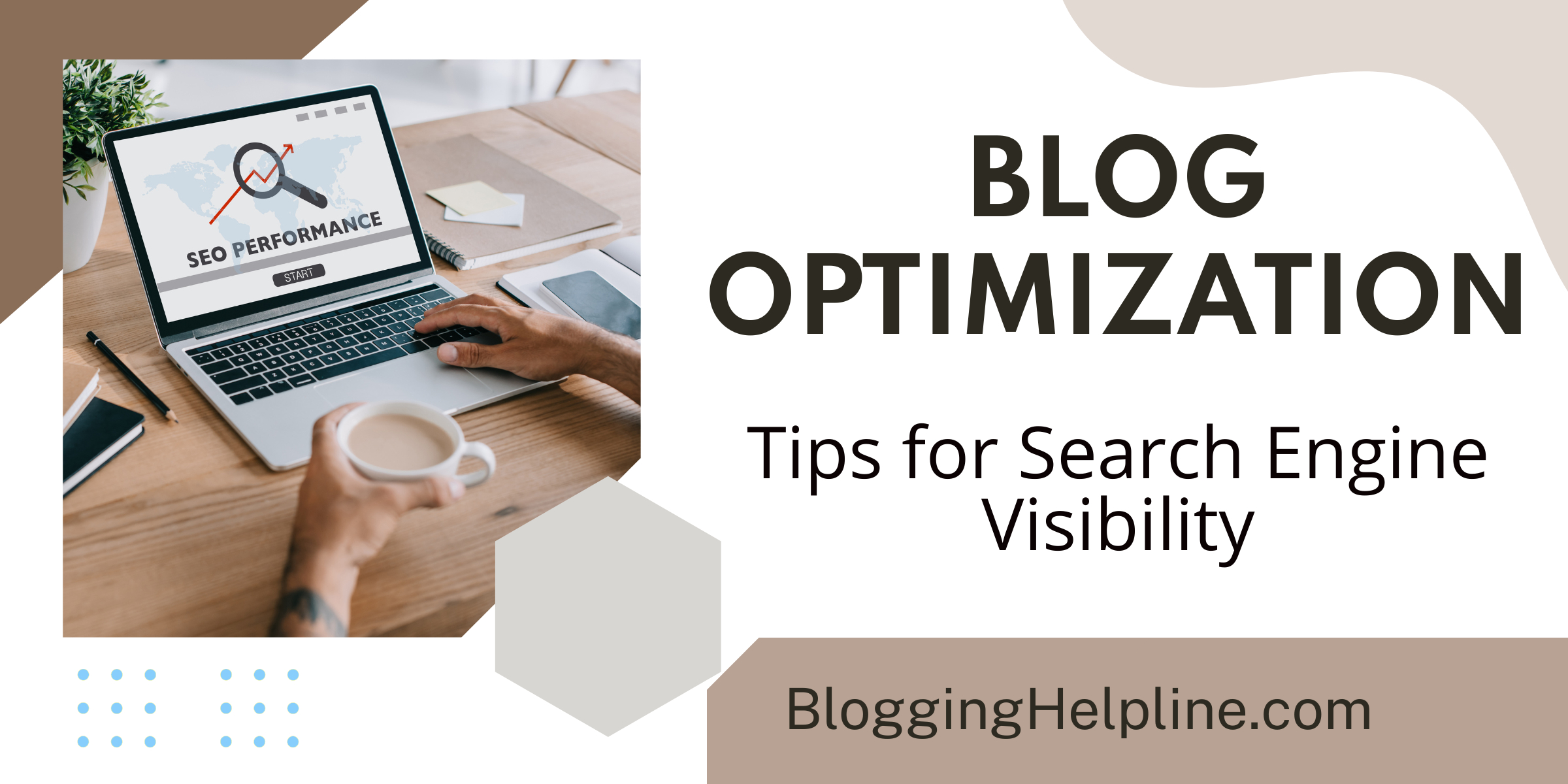Table of Contents
- 1. Conduct Keyword Research
- 2. Optimize Your Blog Posts
- Use Keywords in Your Titles and Headings
- Use Keywords Throughout Your Blog Posts
- Use Internal and External Links
- 3. Use Social Media
- 4. Monitor Your Analytics
- 5. Optimize for Mobile Devices
- Conclusion
Blog Optimization: How to Optimize Your Blog for Search Engines
As a blogger, it’s important to write high-quality content that appeals to both your readers and search engines. By optimizing your blog for search engines, you can attract more traffic, improve your search engine ranking, and increase your online visibility. In this guide, we’ll share some tips on how to optimize your blog for search engines.
1. Conduct Keyword Research
The first step in optimizing your blog for search engines is to conduct keyword research. Keyword research helps you identify the words and phrases people are searching for related to your blog topic. By using these keywords in your blog posts, you can improve your chances of ranking higher in search results.
Identify Relevant Keywords
Start by brainstorming a list of words and phrases that are relevant to your blog topic. These can be general terms related to your niche or specific topics you plan to cover. Once you have a list of keywords, use a keyword tool like Google Keyword Planner or SEMRush to find out how many people are searching for those keywords and how competitive they are.
Use Long-Tail Keywords
In addition to using general keywords, it’s important to use long-tail keywords in your blog posts. Long-tail keywords are more specific phrases that people are searching for. They are less competitive than general keywords and can help you rank higher in search results.
2. Optimize Your Blog Posts
Once you have a list of keywords, it’s time to start optimizing your blog posts.
Use Keywords in Your Titles and Headings
One of the most important places to use your keywords is in your blog post titles and headings. This helps search engines understand what your post is about and can improve your search engine ranking.
Use Keywords Throughout Your Blog Posts
In addition to using keywords in your titles and headings, it’s important to use them throughout your blog posts. This includes in the body of your text, in image alt tags, and in meta descriptions.
Use Internal and External Links
Another important element of blog optimization is including internal and external links in your posts. Internal links help readers navigate your blog and improve your website structure. External links can improve your website’s credibility and provide additional information for your readers.
3. Use Social Media
Social media can be a powerful tool for blog optimization. By sharing your blog posts on social media, you can attract more traffic and improve your search engine ranking.
Share Your Posts on Social Media
When you publish a new blog post, share it on your social media accounts. This can help you attract more traffic and improve your search engine ranking.
Use Hashtags
In addition to sharing your posts on social media, it’s important to use hashtags. Hashtags can help people find your posts and improve your search engine ranking.
4. Monitor Your Analytics
To determine if your blog optimization strategy is working, it’s important to monitor your website analytics. This can help you track your website traffic, search engine ranking, and other important metrics.
Use Google Analytics
One of the most important analytics tools for website owners is Google Analytics. This tool provides detailed insights into your website traffic and can help you track your blog optimization progress.
Monitor Search Engine Rankings
In addition to monitoring website traffic, it’s important to monitor your search engine ranking. This can help you determine if your blog optimization strategy is working and make adjustments as needed.
5. Optimize for Mobile Devices
With more people accessing the internet from their mobile devices, it’s important to optimize your blog for mobile users.
Use Responsive Design
Responsive design is an approach to web design that allows your website to adapt to different screen sizes. By using responsive design, you can ensure that your blog is easy to read and navigate on mobile devices.
Use Mobile-Friendly Features
In addition to responsive design, it’s important to use mobile-friendly features on your blog. This includes things like large buttons, easy navigation, and short paragraphs.
Conclusion
Blog optimization is essential for attracting more traffic, improving your search engine ranking, and increasing your online visibility. By following these tips, you can optimize your blog for search engines and achieve your blogging goals.
